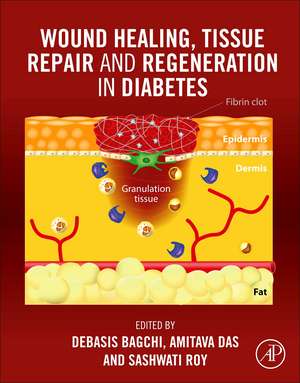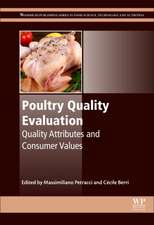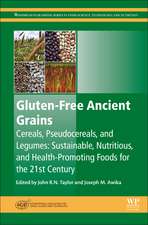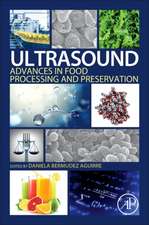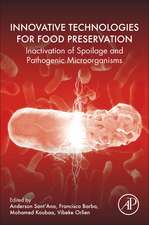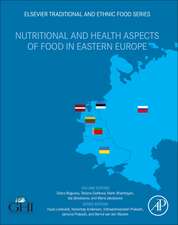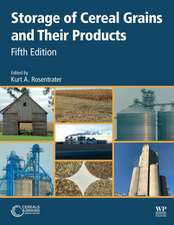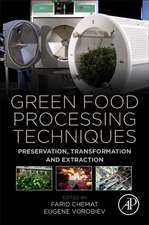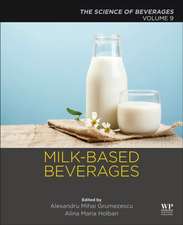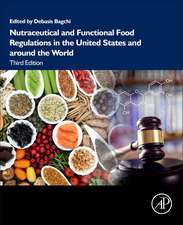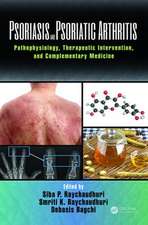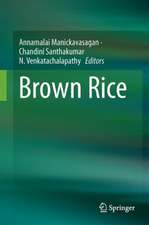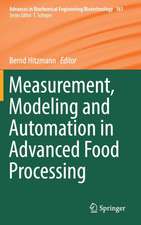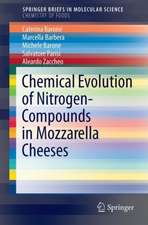Wound Healing, Tissue Repair, and Regeneration in Diabetes
Editat de Debasis Bagchi, Amitava Das, Sashwati Royen Limba Engleză Paperback – 24 apr 2020
This book is sure to be a welcome resource for nutritionists, practitioners, surgeons, nurses, wound researchers and other health professionals.
- Explains diabetic wounds and their complications
- Assesses the role of nutraceuticals, herbal supplements and other modalities for use in treating diabetic wounds
- Provides protocols for diabetic wound management
Preț: 699.35 lei
Preț vechi: 768.52 lei
-9% Nou
Puncte Express: 1049
Preț estimativ în valută:
133.82€ • 139.72$ • 110.75£
133.82€ • 139.72$ • 110.75£
Carte tipărită la comandă
Livrare economică 29 martie-12 aprilie
Preluare comenzi: 021 569.72.76
Specificații
ISBN-13: 9780128164136
ISBN-10: 0128164131
Pagini: 638
Dimensiuni: 191 x 235 mm
Editura: ELSEVIER SCIENCE
ISBN-10: 0128164131
Pagini: 638
Dimensiuni: 191 x 235 mm
Editura: ELSEVIER SCIENCE
Public țintă
general practitioners, surgeons, nurses, health professionals, wound researchers and practitioners, nutritionistsCuprins
Part 1: Background and Overview
1. Concept and stages of wound healing
2. Pathophysiology of Diabetic ulcers
3. Wound infection and inflammation
4. The Angiogenic Response
5. Fetal Wound Healing
6. The Extracellular matrix: its formation and role in wound healing
7. Scarring and fibrosis
8. Role of cytokines and chemokines in wound healing
9. Dysregulated inflammation in diabetic wounds
10. Role of oxygen in diabetic wound healing
11. Epigenetics of diabetic wound healing
12. Tissue regeneration
13. Energetics and nutritional status of chronic and diabetic wounds
14. Epidemiology of Diabetic wounds
Part Two: Clinical Update and Therapeutic Standards
15. Wound management and its principles
16. Chronic wounds and its menaces
17. Surgical Debridement and NPWT
18. Clinical management of DFU
19. Diabetic neuropathy
20. Malignant wounds
Part Three: Therapeutic Interventions
21. Biomaterials used to treat diabetic wounds
22. Peptides to treat diabetic wounds
23. Nutraceutical interventions of wound healing and inflammation
24. Papaya: A natural remedy for diabetic wounds
25. Role of berries in wound healing
Part Four: Future Directions
26. MiRNA in diabetic wound healing
27. Electroceuticals: an emerging field in wound healing
28. Nano-electroporation and reprogramming
1. Concept and stages of wound healing
2. Pathophysiology of Diabetic ulcers
3. Wound infection and inflammation
4. The Angiogenic Response
5. Fetal Wound Healing
6. The Extracellular matrix: its formation and role in wound healing
7. Scarring and fibrosis
8. Role of cytokines and chemokines in wound healing
9. Dysregulated inflammation in diabetic wounds
10. Role of oxygen in diabetic wound healing
11. Epigenetics of diabetic wound healing
12. Tissue regeneration
13. Energetics and nutritional status of chronic and diabetic wounds
14. Epidemiology of Diabetic wounds
Part Two: Clinical Update and Therapeutic Standards
15. Wound management and its principles
16. Chronic wounds and its menaces
17. Surgical Debridement and NPWT
18. Clinical management of DFU
19. Diabetic neuropathy
20. Malignant wounds
Part Three: Therapeutic Interventions
21. Biomaterials used to treat diabetic wounds
22. Peptides to treat diabetic wounds
23. Nutraceutical interventions of wound healing and inflammation
24. Papaya: A natural remedy for diabetic wounds
25. Role of berries in wound healing
Part Four: Future Directions
26. MiRNA in diabetic wound healing
27. Electroceuticals: an emerging field in wound healing
28. Nano-electroporation and reprogramming
